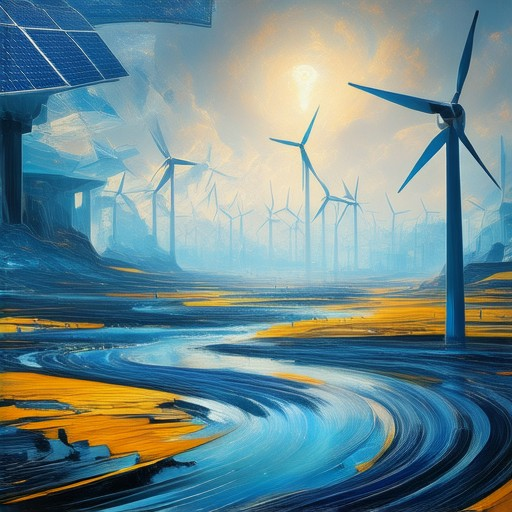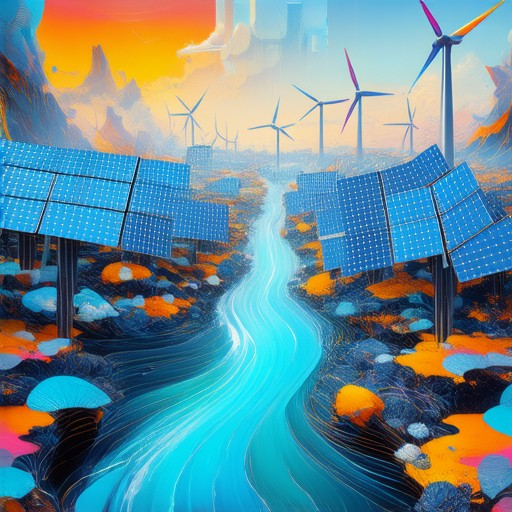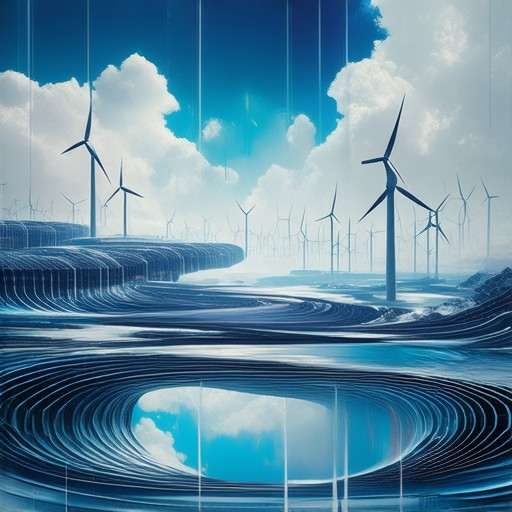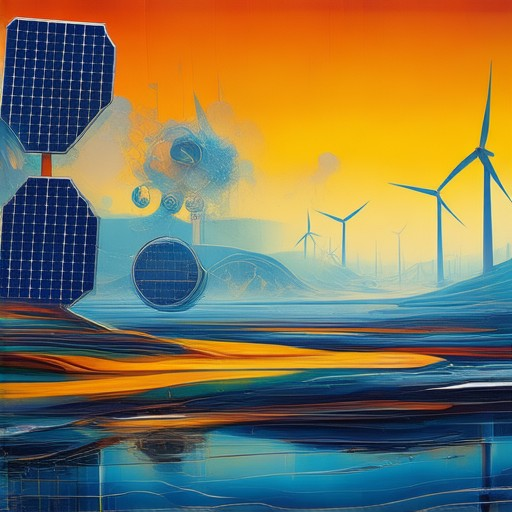As the world continues to grapple with the challenges of climate change and the finite supply of non-renewable resources, the shift toward renewable energy sources has gained significant momentum. These cleaner and more sustainable power solutions offer a promising pathway toward reducing carbon footprints and ensuring a greener future. Renewable energy sources encompass a wide array of technologies, each with unique advantages and applications. From solar panels to wind turbines, these systems provide reliable and eco-friendly alternatives to traditional energy sources. Understanding the various types of renewable energy sources, their benefits, and their longevity is essential for anyone looking to contribute to a more sustainable planet. This comprehensive guide delves into the intricacies of renewable energy sources, exploring everything from their environmental impact to their practical implementations. By examining the different options available, we aim to provide clarity on which renewable energy sources might be most suitable for diverse scenarios, ultimately fostering a deeper appreciation for the role of clean energy in our lives.

What Are the 5 Main Renewable Energy Sources?
- Solar Power
- Wind Energy
- Hydropower
- Geothermal Energy
- Bioenergy (Biomass)
Solar energy harnesses the power of sunlight through photovoltaic cells or solar thermal systems. It is widely used in residential and commercial settings, helping reduce reliance on fossil fuels.
Explore Solar Energy Solutions
Wind energy converts the kinetic energy of wind into electricity using turbines. It is a scalable solution, particularly effective in coastal and rural areas.
Discover Wind Energy Applications
Hydropower generates electricity by utilizing the potential energy of flowing water. It remains one of the most reliable and largest sources of renewable energy globally.
Understand Hydropower Technology
Geothermal energy taps the heat generated by Earth’s core to produce electricity. It operates year-round and has a high energy efficiency rate.
Bioenergy produces energy from organic materials, such as wood, agricultural waste, and sewage sludge. It offers a sustainable alternative to traditional energy sources.
Tidal energy, while not part of the original five, is increasingly recognized as a promising renewable source. It harnesses the movement of ocean tides to generate electricity, offering significant potential for future energy solutions.
Top 10 Renewable Energy Sources
- Solar Energy: Harnesses sunlight through photovoltaic cells or solar thermal systems to convert energy.
- Wind Energy: Utilizes wind turbines to capture kinetic energy from moving air, converting it into electricity.
- Hydroelectric Power: Generates electricity by utilizing the potential energy of flowing or falling water in rivers.
- Geothermal Energy: Converts heat stored deep within the Earth’s crust into electricity using steam turbines.
- Tidal Energy: Captures energy from ocean tides, using underwater turbines or barrages to generate electricity.
- Wave Energy: Converts ocean waves into electrical energy using devices like floating buoys or shoreline structures.
- Biomass Energy: Produces energy by burning organic materials, such as agricultural waste or wood, in efficient combustion systems.
- Hydrogen Fuel Cells: Uses hydrogen gas as fuel, producing zero emissions and converting it into electricity through a fuel cell stack.
- Biogas: Creates energy by anaerobic digestion of organic waste, producing a methane-rich gas that can be burned for energy.
- Municipal Solid Waste: Converts non-recyclable trash into energy through incineration or gasification processes.

What Are the 7 Types of Renewable Energy Sources?
Eco Planeta Verde is committed to promoting sustainable living through education and awareness of various renewable energy sources. These energy sources play a crucial role in reducing our reliance on non-renewable resources and minimizing environmental impact.
Primary Renewable Energy Sources
These are energy sources that can be directly converted into electricity without prior treatment:
- Solar Power
-
Derived from sunlight, solar energy is captured using photovoltaic cells or solar thermal systems. It is widely used in residential and commercial settings, as well as in large-scale solar farms.
-
Wind Energy
-
Generated by turbines that convert kinetic energy from moving air into electricity. Wind farms are often located offshore or in open areas with consistent wind patterns.
-
Geothermal Energy
-
Created by the Earth’s heat, geothermal energy is extracted through wells to generate electricity. It is highly efficient and available in regions with volcanic or tectonic activity.
-
Hydropower
-
Utilizes the potential energy of flowing or falling water to drive turbines. Major hydropower plants are built on large rivers, while smaller systems use run-of-the-river technology.
-
Biomass Energy
- Produced from organic materials such as agricultural waste, forest residues, and sewage sludge. Biomass is converted into energy through combustion or anaerobic digestion.
Secondary Renewable Energy Sources
These sources involve converting energy from primary sources into a usable form:
- Wave Energy
-
Captured by devices that convert the up-and-down motion of ocean waves into electricity. Wave energy is less common but has significant potential in coastal areas.
-
Tidal Energy
-
Derived from the rise and fall of ocean tides, tidal energy is generated using barrages or underwater turbines.
-
Landfill Gas Energy
- Recovered from decomposing organic waste in landfills, this energy is used to generate electricity through flares or engines.
Eco Planeta Verde encourages exploring these renewable energy sources to contribute to a cleaner, more sustainable future. By adopting these technologies, we can reduce greenhouse gas emissions and promote long-term environmental health.

Best Type of Renewable Energy
The best type of renewable energy depends on various factors such as availability, efficiency, and regional suitability. Here’s an overview of the primary options:
-
Solar Energy : Highly accessible and widely used, solar energy converts sunlight into electricity. While it offers long-term cost savings and reduced emissions, its reliance on weather conditions can limit consistency.
-
Wind Energy : Utilizes wind turbines to generate electricity. It is relatively consistent and available in many regions, though it may face challenges like noise pollution and visual impact.
-
Hydropower : Uses water movement through dams to produce electricity. While efficient, it can have significant ecological impacts and disrupt local communities.
-
Biomass Energy : Derived from organic materials like crops, it produces biogas for energy. However, concerns about land use and carbon neutrality arise.
-
Geothermal Energy : Leverages the Earth’s heat for electricity generation, offering year-round reliability but with high initial costs.
-
Marine Energy : Includes tidal and wave power, suitable for coastal areas. It is less common but holds potential for future development.
Each renewable energy source has unique advantages and limitations. A diversified approach, combining multiple sources, is often most effective for achieving sustainability and energy security. For instance, countries like Germany integrate solar, wind, and fossil fuels to balance their energy needs. Thus, the optimal choice varies based on regional conditions and objectives.
What is the Cleanest Renewable Energy Source?
The cleanest renewable energy sources are those with the lowest environmental impact and greenhouse gas emissions. Among the available options, solar energy is often considered the cleanest due to its ability to generate electricity with minimal emissions during operation.
- Solar Energy: Solar panels convert sunlight directly into electricity, producing no emissions during operation. While the manufacturing process has environmental impacts, advancements are reducing these effects. Solar energy is highly scalable and can be used in residential, commercial, and large-scale applications.
- Wind Energy: Wind turbines convert kinetic energy from wind into electricity, emitting little to no greenhouse gases. Concerns exist around the materials used and impact on wildlife, but modern designs are more efficient and less intrusive.
- Biomass Energy: Biomass converts organic materials into energy, often offsetting CO2 emissions through plant absorption. Efficiency and sustainability of fuel sources are critical factors.
- Hydropower: Hydropower uses water potential to generate electricity. While large dams have environmental impacts, smaller systems like micro-hydro are very clean and minimally disruptive.
- Geothermal Energy: Geothermal generates electricity using Earth’s heat, emitting almost no greenhouse gases. Its viability depends on geological conditions and local environmental impacts.
Solar energy stands out as a leading clean renewable source due to its scalability, accessibility, and low environmental impact. Advances in technology continue to enhance its efficiency and affordability, making it a top choice for clean energy solutions.

How Long Do Solar Panels Last?
Solar panels typically last between **20 to 25 years** under normal conditions. However, this lifespan can vary based on several factors:
Factors Affecting Solar Panel Lifespan
- Temperature and Humidity: High temperatures and humidity can cause degradation, reducing efficiency and lifespan.
- Panel Type: Monocrystalline panels are generally more durable and efficient compared to polycrystalline ones.
- Inverter Lifespan: The inverter, which converts sunlight to electricity, typically lasts 10-15 years and should be replaced when old.
Extending Solar Panel Lifespan
- Maintenance: Regularly clean your panels and check for loose components or damage.
- Shade Issues: Avoid shading your panels, as this can reduce efficiency and lead to premature aging.
- Microinverters: While not part of the panel, microinverters can extend the system’s lifespan by monitoring individual panels.
Conclusion
Solar panels are a long-term investment in renewable energy, lasting up to 25 years on average. Proper care and maintenance can ensure they perform efficiently for many years to come.




0 Comments